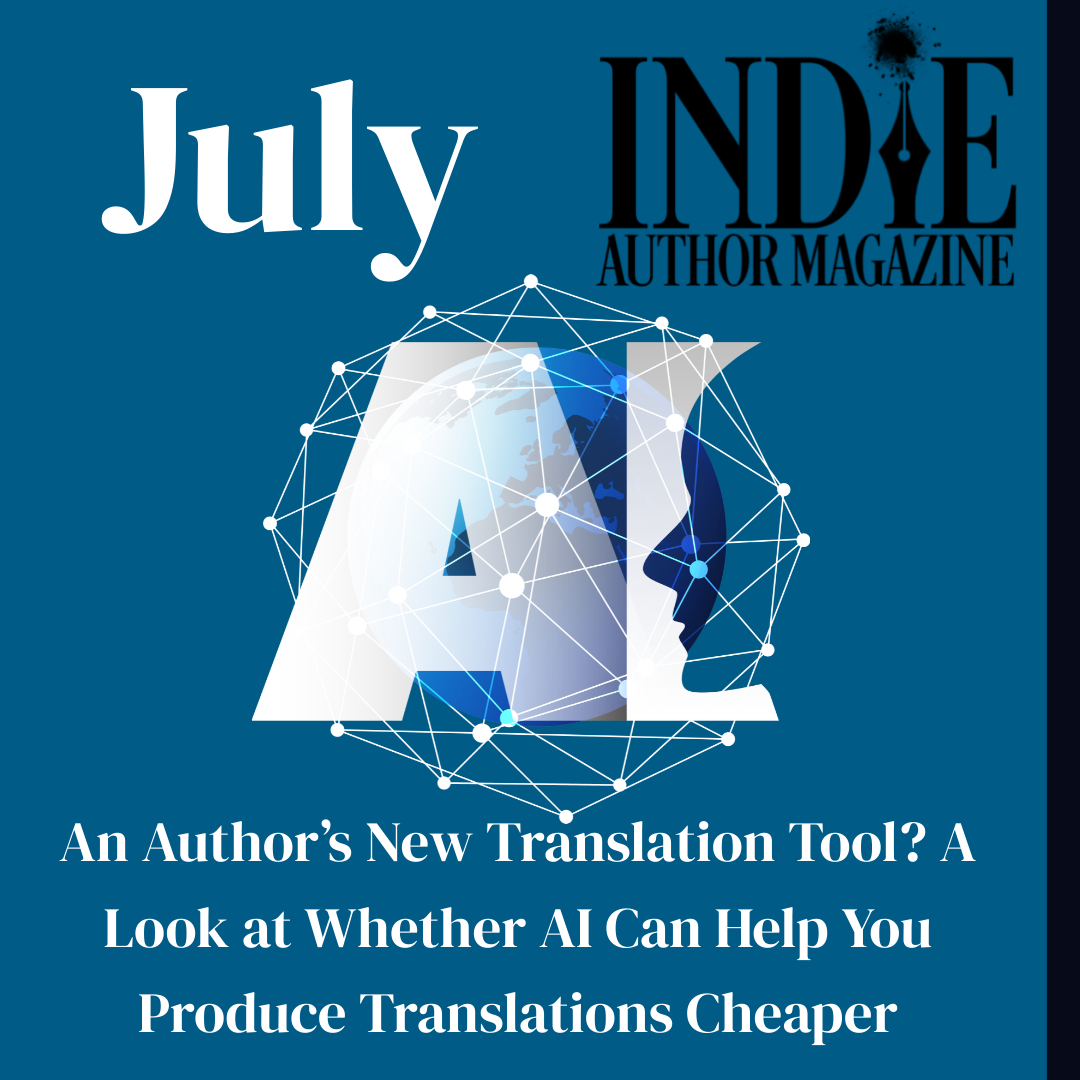A Look at Whether AI Can Help You Produce Translations Cheaper
From direct sales to AI-generated audiobooks, technology is rapidly advancing, opening doors to new publishing mediums that were all but closed to most authors in recent years. Those seeking opportunities to reach new audiences often turn to translations, making further use of their intellectual property by getting their books translated into foreign languages and targeting other markets that may be underserved. However, this has its own issues—most notably that hiring professional human translators can be cost-prohibitive. Some authors are at an impasse, either unable to afford a quality translation and ignoring the market entirely or turning to less-experienced editors to find their investment squelched by poor reviews. But there is a middle ground rising from the world of artificial intelligence. Large language models such as DeepL and ChatGPT are making strides in translating English into foreign languages.
Authors are using this technology by combining it with human proofreaders or editors of the translated language who can catch the errors you can’t, ensuring accuracy while cutting down on costs. This middle ground in the AI versus human translation debate gives both arguments credence by employing humans, one of the primary arguments against AI, and utilizing the efficiency of technology, one of the primary arguments in support of it.
But while this use case might seem like a happy medium, there are still questions left unanswered. Who owns the rights to the work when both AI and human editors are involved? How trustworthy is the method really, and does it trade financial cost for more time away from other projects? Whatever your publishing path is, when exploring translating your books into foreign languages, you should always understand your options, opportunities, and considerations as it pertains to your intellectual property. Explored are a few options for making your book available in other languages.
Human Translators
Often viewed as the most expensive option, authors often seek qualified translators from word-of-mouth referrals, job-posting boards such as Fiverr and Reedsy, or through translation service agencies. Once a translator has been selected and the terms agreed upon, authors work collaboratively with the translator to transform their book from one language into another. This process takes the largest amount of time and thus is the most expensive. The price to employ a translator is often a concern for budget-conscious authors, ranging on average between $0.08 to $0.12 a word, or $6,700 to $9,600 for an eighty-thousand-word manuscript, according to Reedsy.
The time necessary to translate a book ranges, but authors should be prepared for the project to reach fruition in weeks if not months. As with any collaboration, a translator may request the author participate in the process via video conferences, emails, or messages to discuss issues or preferences as they arise. Once the manuscript has been produced, authors might seek a beta reader for the translated manuscript, as with any kind of edit, there is a likelihood for errors to slip through. This is an additional expense authors need to consider. Once the manuscript is at a finished stage, authors may incur additional expenses, such as alternative cover designs and book formatting, which should be factored into the author’s overall budget for the project. As always, the author needs to consider the terms of the agreement with the translator and how it pertains to the intellectual property of the translated piece. Authors should be ready to read their contract end-to-end to ensure they know what they’re signing.
Full AI Translation
AI applications have seen an exponential uptick in development and capabilities in the last five years. Large language models (LLMs), generally the applications associated with AI technology, generate human-like text based on the prompts they receive, including translating existing writing into a new language. ChatGPT and DeepL are two applications capable of translating text, with an efficacy that seems to be improving.
Authors should refer to the specific application of their choice for more guidance but can generally expect to input a selection of text and ask the application via prompt to translate it into the language they desire. But while applications are improving, two problems arise when relying only on the application.
First, AI applications, specifically LLMs, can “hallucinate,” or generate incorrect or made-up information while attempting to answer a question or complete a task. The application is attempting to generate plausible text based on patterns it has been trained upon, but it doesn’t actually “know” the information asked of it. As a result, authors could receive parts of their manuscript where the application has hallucinated, or added in sections, words, or phrases that were never actually provided in the source text.
The second issue comes from the perspective of copyright—specifically, who owns the copyright to text generated by AI, even if the source material is the author’s intellectual property. Even though legal discussions surrounding AI have been ongoing for more than a year, this area is still muddled, and further developments in the field of AI and copyrighted material are expected in the coming months.
Authors may see AI technology as the solution to the high expenditure of hiring human translators, but the other implications regarding property rights and consistency of the applications used still need to be considered. Also keep in mind that direct translations may not work in some genres or with certain idioms or phrases. Language contains nuances that AI technology may not be trained to see or translate. Those not fond of the idea of putting all their trust in an AI application or the expensive costs of a cover-to-cover translation may look to a hybrid of the two approaches.
Partnership with AI and a Translator
Authors, whether working exclusively with a human translator or running their book through an AI application, can face pros and cons with both options for translating their work. However, there may be room for a hybrid of the two approaches.
In this case, an author would run their book or piece through an application, either in sections or in entirety, and pass off the manuscript to a translator for beta reading and quality control. Currently, AI can translate large amounts of text to varying degrees of success depending on the platform used, enough so that the time spent by the translator may be reduced. Authors can also expect lower costs than a full translation, though this can vary as the quality of output by the application also varies. Authors must still answer the questions surrounding intellectual property and their agreement with a translator, and are encouraged to review all documents before signing. For example, Joanna Penn found that in Germany, the copyright to the translated document belongs to the translator. However, if the first draft is created mostly by the author through AI, and that draft is then edited by a translator, the author maintains the copyright.
No matter the path an author chooses, exploring translations is a rich market of opportunity for making the most out of their intellectual property. Over time, AI technology is expected to improve, thus continuing to provide more options for authors to publish in other languages and countries that might have otherwise been inaccessible because of the costs of hiring translators. It’s up to the authors themselves to explore all options and find what works best for their business.
David Viergutz


